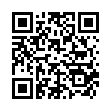|
Quasi-Isometric Bounded Generation by ${\mathbb Q}$-Rank-One Subgroups
Dave Witte Morris
Department of Mathematics and Computer Science, University of Lethbridge, Lethbridge, Alberta, T1K 3M4, Canada
Abstract:
We say that a subset $X$ quasi-isometrically boundedly generates a finitely generated group $\Gamma$ if each element $\gamma$ of a finite-index subgroup of $\Gamma$ can be written as a product $\gamma = x_1 x_2 \cdots x_r$ of a bounded number of elements of $X$, such that the word length of each $x_i$ is bounded by a constant times the word length of $\gamma$. A. Lubotzky, S. Mozes, and M.S. Raghunathan observed in 1993 that ${\rm SL}(n,{\mathbb Z})$ is quasi-isometrically boundedly generated by the elements of its natural ${\rm SL}(2,{\mathbb Z})$ subgroups. We generalize (a slightly weakened version of) this by showing that every $S$-arithmetic subgroup of an isotropic, almost-simple ${\mathbb Q}$-group is quasi-isometrically boundedly generated by standard ${\mathbb Q}$-rank-1 subgroups.
Keywords:
arithmetic group, quasi-isometric, bounded generation, discrete subgroup.
Received: August 16, 2019; in final form March 5, 2020; Published online March 11, 2020
Citation:
Dave Witte Morris, “Quasi-Isometric Bounded Generation by ${\mathbb Q}$-Rank-One Subgroups”, SIGMA, 16 (2020), 012, 17 pp.
Linking options:
https://www.mathnet.ru/eng/sigma1549 https://www.mathnet.ru/eng/sigma/v16/p12
|

| Statistics & downloads: |
| Abstract page: | 128 | | Full-text PDF : | 42 | | References: | 29 |
|




 Contact us:
Contact us: Terms of Use
Terms of Use
 Registration to the website
Registration to the website Logotypes
Logotypes








 Citation in format
Citation in format 